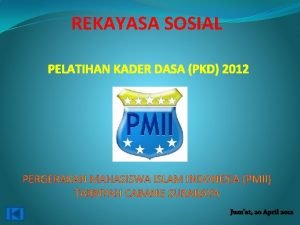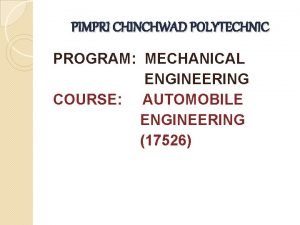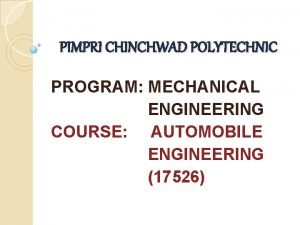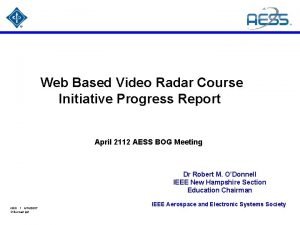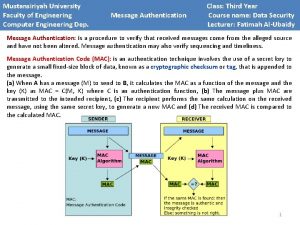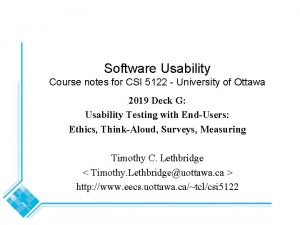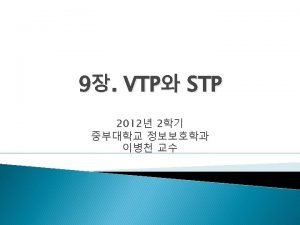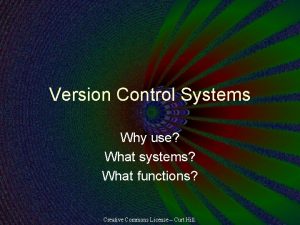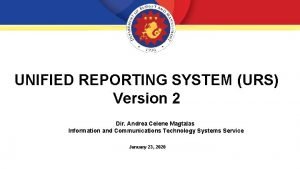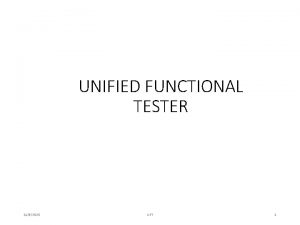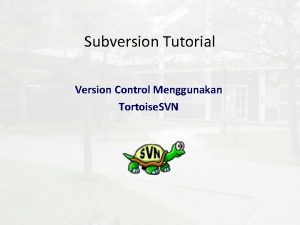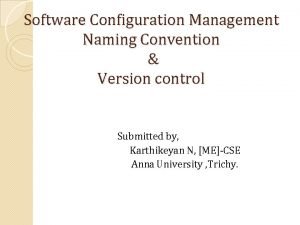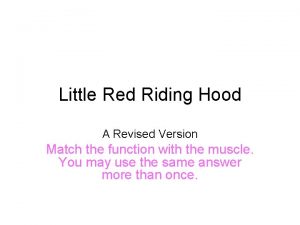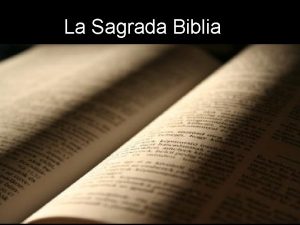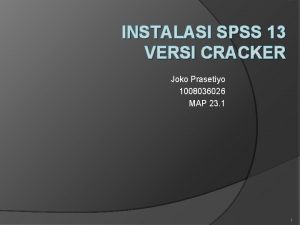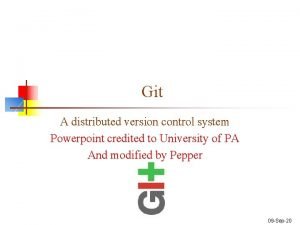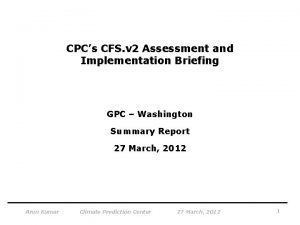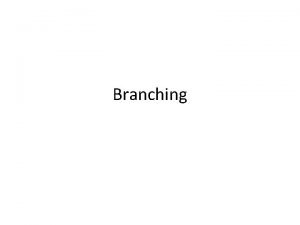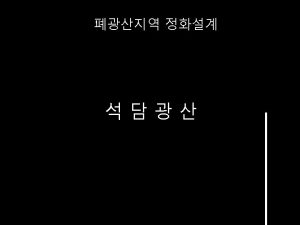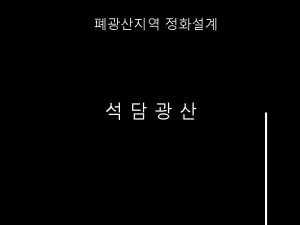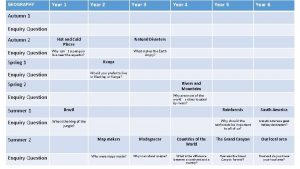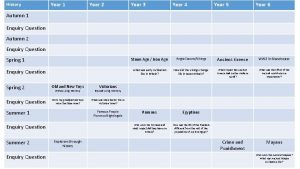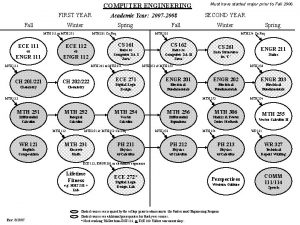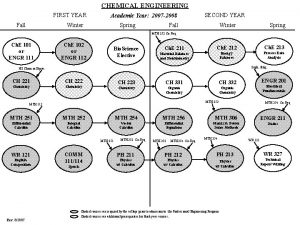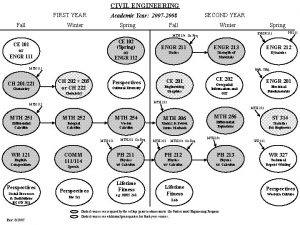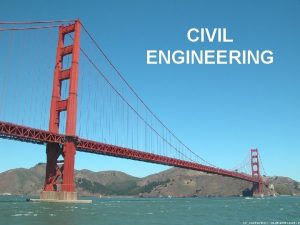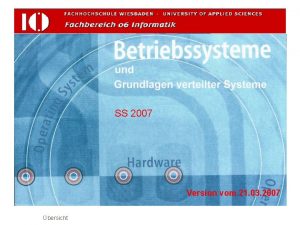Course Year Version S 0484Foundation Engineering 2007 10









































- Slides: 41

Course Year Version : S 0484/Foundation Engineering : 2007 : 1/0 Session 5 – 6 BEARING CAPACITY OF SHALLOW FOUNDATION

SHALLOW FOUNDATION Topic: • General • Terzaghi Model • Meyerhoff Model • Brinch Hansen Model • Influence of multi layer soil • Influence of ground water elevation • Shallow Foundation Bearing by N-SPT value

TYPES OF SHALLOW FOUNDATION

TYPES OF SHALLOW FOUNDATION

TERZAGHI MODEL Assumptions: • Subsoil below foundation structure is homogenous • Shallow foundation Df < B • Continuous, or strip, footing : 2 D case • Rough base • Equivalent surcharge

TERZAGHI MODEL FAILURE ZONES: 1. ACD : TRIANGULAR ZONES 2. ADF & CDE : RADIAL SHEAR ZONES 3. AFH & CEG : RANKINE PASSIVE ZONES

TERZAGHI MODEL (GENERAL FAILURE) • STRIP FOUNDATION qult = c. Nc + q. Nq + 0. 5. . B. N • SQUARE FOUNDATION qult = 1. 3. c. Nc + q. Nq + 0. 4. . B. N • CIRCULAR FOUNDATION qult = 1. 3. c. Nc + q. Nq + 0. 3. . B. N Where: c = cohesion of soil q = . Df ; Df = the thickness of foundation embedded on subsoil = unit weight of soil B = foundation width Nc, Nq, N = bearing capacity factors

BEARING CAPACITY FACTORS GENERAL FAILURE

BEARING CAPACITY FACTORS GENERAL FAILURE

TERZAGHI MODEL (LOCAL FAILURE) • STRIP FOUNDATION qult = 2/3. c. Nc’ + q. Nq’ + 0. 5. . B. N ’ • SQUARE FOUNDATION qult = 0. 867. c. Nc’ + q. Nq’ + 0. 4. . B. N ’ • CIRCULAR FOUNDATION qult = 0. 867. c. Nc’ + q. Nq’ + 0. 3. . B. N ’ Where: c = cohesion of soil q = . Df ; Df = the thickness of foundation embedded on subsoil = unit weight of soil B = foundation width Nc, Nq, N = bearing capacity factors ’ = tan-1 (2/3. tan )

BEARING CAPACITY FACTORS LOCAL FAILURE

BEARING CAPACITY FACTORS

GROUND WATER INFLUENCE

GROUND WATER INFLUENCE • CASE 1 0 D 1 < Df q = D 1. dry + D 2. ’ • CASE 2 0 d B q = dry. Df the value of in third part of equation is replaced with = ’ + (d/B). ( dry - ’)

FACTOR OF SAFETY Where: qu = gross ultimate bearing capacity of shallow foundation qall = gross allowable bearing capacity of shallow foundation qnet(u) = net ultimate bearing capacity of shallow foundation qall = net allowable bearing capacity of shallow foundation FS = Factor of Safety (FS 3)

NET ALLOWABLE BEARING CAPACITY PROCEDURE: 1. Find the developed cohesion and the angle of friction FSshear = 1. 4 – 1. 6 2. Calculate the gross allowable bearing capacity (qall) according to terzaghi equation with cd and d as the shear strength parameters of the soil Ex. : qall = cd. Nc + q. Nq + ½ . B. N Where Nc, Nq, N = bearing capacity factor for the friction angle, d 3. Find the net allowable bearing capacity (qall(net)) qall(net) = qall - q

EXAMPLE – PROBLEM A square foundation is 5 ft x 5 ft in plan. The soil supporting the foundation has a friction angle of = 20 o and c = 320 lb/ft 2. The unit weight of soil, , is 115 lb/ft 3. Assume that the depth of the foundation (Df) is 3 ft and the general shear failure occurs in the soil. Determine: - the allowable gross load on the foundation with a factor of safety (FS) of 4. - the net allowable load for the foundation with FSshear = 1. 5

EXAMPLE – SOLUTION Foundation Type: Square Foundation

EXAMPLE – SOLUTION

GENERAL BEARING CAPACITY EQUATION Meyerhof’s Theory Df

BEARING CAPACITY FACTOR

SHAPE, DEPTH AND INCLINATION FACTOR

EXAMPLE 2 Determine the size (diameter) circle foundation of tank structure as shown in the following picture P = 73 ton dry = 13 k. N/m 3 sat = 18 k. N/m 3 c = 1 kg/cm 2 = 20 o Tank 2 m Foundation GWL With P is the load of tank, neglected the weight of foundation and use factor of safety, FS = 3. 5.

EXAMPLE 3 SQUARE FOUNDATION B = 4 m dry = 13 k. N/m 3 DETERMINE THE FACTOR OF SAFETY FOR: -CASE 1 : GWL LOCATED AT 0. 3 m (MEASURED FROM THE SURFACE OF SOIL) -CASE 2 : GWL LOCATED AT 1. 5 m (MEASURED FROM THE SURFACE OF SOIL)

ECCENTRICALLY LOADED FOUNDATIONS

ECCENTRICALLY LOADED FOUNDATIONS

ONE WAY ECCENTRICITY Meyerhof’s step by step procedure: • Determine the effective dimensions of the foundation as : B’ = effective width = B – 2 e L’ = effective length = L Note: – if the eccentricity were in the direction of the length of the foundation, the value of L’ would be equal to L-2 e and the value of B’ would be B. – The smaller of the two dimensions (L’ and B’) is the effective width of the foundation • Determine the ultimate bearing capacity to determine Fcs, Fqs, F s use effective length and effective width to determine Fcd, Fqd, F d use B • The total ultimate load that the foundation can sustain is Qult = qu’. B’. L’ ; where B’x. L’ = A’ (effective area) • The factor of safety against bearing capacity failure is FS = Qult/Q • Check the factor of safety against qmax, or, FS = qu’/qmax

EXAMPLE – PROBLEM A Square foundation is shown in the following figure. Assume that the one- way load eccentricity e = 0. 15 m. Determine the ultimate load, Qult

EXAMPLE – SOLUTION With c = 0, the bearing capacity equation becomes

TWO-WAY ECCENTRICITY

TWO-WAY ECCENTRICITY – CASE 1

TWO-WAY ECCENTRICITY – CASE 2

TWO-WAY ECCENTRICITY – CASE 3

TWO-WAY ECCENTRICITY – CASE 4

BEARING CAPACITY OF LAYERED SOILS STRONGER SOIL UNDERLAIN BY WEAKER SOIL

BEARING CAPACITY OF LAYERED SOILS

BEARING CAPACITY OF LAYERED SOILS Rectangular Foundation

BEARING CAPACITY OF LAYERED SOILS SPECIAL CASES – TOP LAYER IS STRONG SAND BOTTOM LAYER IS SATURATED SOFT CLAY ( 2 = 0) – TOP LAYER IS STRONGER SAND BOTTOM LAYER IS WEAKER SAND (c 1 = 0 , c 2 = 0) – TOP LAYER IS STRONGER SATURATED CLAY ( 1 = 0) AND BOTTOM LAYER IS WEAKER SATURATED CLAY ( 2 = 0) Find the formula for the above special cases

BEARING CAPACITY FROM N-SPT VALUE A square foundation Bx. B has to be constructed as shown in the following figure. Assume that = 105 lb/ft 3, sat = 118 lb/ft 3, Df = 4 ft and D 1 = 2 ft. The gross allowable load, Qall, with FS = 3 is 150, 000 lb. The field standard penetration resistance, NF values are as follow: Determine the size of the foundation

SOLUTION Correction of standard penetration number (Liao and Whitman relationship)

SOLUTION
 Leavers poem primary school
Leavers poem primary school Building with bricks
Building with bricks Course number and title
Course number and title Course interne course externe
Course interne course externe Fyp progress report
Fyp progress report Software engineering course syllabus
Software engineering course syllabus Internet engineering course
Internet engineering course Reksos adalah
Reksos adalah Mechanical engineering course
Mechanical engineering course Mechanical engineering course
Mechanical engineering course Radar systems engineering course
Radar systems engineering course Computer engineering course
Computer engineering course Introduction to software engineering course outline
Introduction to software engineering course outline Software engineering uottawa course sequence
Software engineering uottawa course sequence What is system design in software engineering
What is system design in software engineering Forward engineering and reverse engineering
Forward engineering and reverse engineering Engineering elegant systems: theory of systems engineering
Engineering elegant systems: theory of systems engineering Elegant systems
Elegant systems Reverse engineering vs forward engineering
Reverse engineering vs forward engineering National literacy and numeracy learning progressions
National literacy and numeracy learning progressions Vtp version 3
Vtp version 3 Version control systems industry
Version control systems industry Unified reporting system version 2
Unified reporting system version 2 Uft version history
Uft version history Classifying triangles maze answers
Classifying triangles maze answers Thoughts and intents of the heart
Thoughts and intents of the heart I believe in one god prayer new version
I believe in one god prayer new version Tortoise svn tutorial
Tortoise svn tutorial Risk student version
Risk student version Software numbering conventions
Software numbering conventions Sac sedboyaca
Sac sedboyaca Romeo and juliet prologue original text
Romeo and juliet prologue original text Alan rea
Alan rea Little red riding hood a revised version answers
Little red riding hood a revised version answers Donde escuchamos con frecuencia la sagrada escritura
Donde escuchamos con frecuencia la sagrada escritura Nhdplus version 2
Nhdplus version 2 Spss 13 free download full version crack
Spss 13 free download full version crack Git tutorial for beginners ppt
Git tutorial for beginners ppt Eviews student version download
Eviews student version download Cfs version 2
Cfs version 2 Version control branching
Version control branching Affinity trial stroke
Affinity trial stroke







